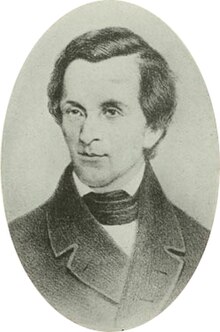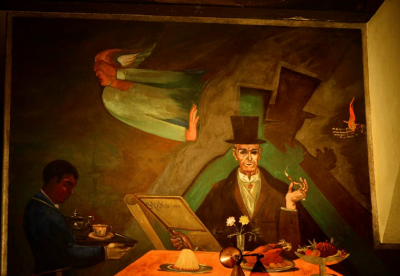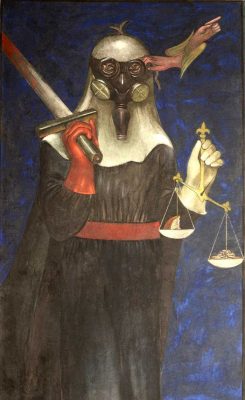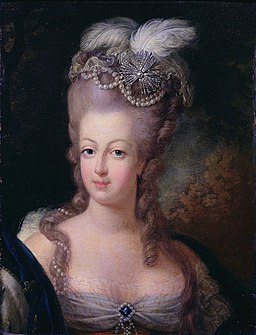
This architect’s concept drawing dates to 1895.
A little dive into the history of Peoria Public Library. Most of this comes from the book “Tomes of Terror“. I tried finding out more on the people themselves, but some of what is written in “Tomes of Terror” is just wrong and or I couldn’t find any information to support what was written. In those cases, I wrote out what I found and the source. Otherwise, take this story for what it is, a good legend.
Peoria Public Library doesn’t look like a place that is cursed, nor does it look to be haunted. Something that looks fairly modern, it’s hard to imagine a place so juxtaposed from one that is typically imagined when it is reported to have as many as thirteen ghosts in residence.
To start off our story, we go to the 1830s, when Andrew and Mary Stevenson Gray lived in a two-story home in Peoria, IL. Life was seemingly well for them until Mary’s brother died, and her nephew came to live with them. He brought with him grief and little else, for he tended to associate with criminals and be of no use as a drunkard. He spent a good deal of time in jail and accrued a lot of fines and fees for lawyers.
Eventually, the Gray’s were unable to pay the debts for their nephew and had used their mortgage as a means to pay their lawyer, David Davis (no wonder he turned out to be a crap lawyer with a name like that). And as this story goes on, Mr. Davis wanted his money and brought a lawsuit against them to foreclose on the mortgage.
Mary kicks her nephew out and when his body is found later floating in the Illinois River she curses the land with “thorns and thistles, ill luck, sickness and death to its every owner and occupant.” 1
The land gained a quick reputation for being haunted. Stories began that Mary’s nephew could be heard crying and begging at the front door. Caretaker’s for the property refused to work there. Because the public opinion was so against David Davis, he never actually lived there and the home abandoned. What a waste!
It’s unclear what or how Mary and Andrew spent the rest of their lives, however there is a legend that states that on the night the house caught fire, the local’s saw the ghost of Mary in the flames, dancing and laughing as the house burned.

The property then becomes the home of Gov. Thomas Ford, who was thought to already have been cursed prior to moving in.2 (Side note: dude went to Transylvania University… I’m being superficial here, but again, what a name.)3
Within quick succession he lost his wife to stomach cancer, then died a few weeks after. Mrs. Ford died of cancer of the stomach October 12th, 1850, aged 38 years; and the Governor, then removed to the residence of Mr. Andrew Gray, already in the last stages of consumption, breathed his last on Sunday, November the 3d of the same year… 4
According to “Tomes of Terror“, the property is then given to an ex-slave, Tom Lindsay. Lindsay had recently been freed by the Emancipation Proclamation, and the son of his ex-master purchased a portion of the property and allowed him to live there.5 However, he wasn’t a slave and bought property himself, though I can find nothing on what property he bought.6
The book “Tomes of Terror“, makes claims that Tom had a lot of issues living there, had to rebuild the home, and employing superstitious methods to live on the land peacefully. But again… the beginning of this section got it all wrong, so maybe there is no truth to this.
Next up “Tomes of Terror” claims that many more property owners and their children died, but without any names I again couldn’t look it up, so I’ll just add it here, cause it makes for a spooky story.
However, in the decades following Lindsay’s departure, several more residents of the property suffered a series of eerie fates. The first was a local businessman whose wife died tragically within the first year of the couple obtaining ownership of the property. The next was a banker whose wife died shortly after giving birth to a baby boy; the child died soon after. That same banker remarried and he and his new wife also had a boy. That boy, who suffered a bizarre affliction wherein he avoided warmth, was often found sleeping in the cold front hallway of the home in the depths of winter. He too, died. His mother’s grief and despair was so deep that she was sent off to Minneapolis in an attempt to recover her sanity. The next resident of the cursed site was a boarding room housekeeper whose son plunged to his death from a hot-air balloon, and whose daughter drowned in the nearby river.
After the property was purchased to use as a library, Fred J. Soldan was appointed as head librarian. He was taken ill after a ride to Washington and returned with other members of the Peoria Bicycle Club in late October 1891 and died of pneumonia on November 5th at age 39.7
E.S. Willcox was appointed next and twenty years later on April 6, 1915, died after being struck by a car.8
- Patterson Prowse died of a heart attack in the library, 1921.9
Lastly in curious sudden deaths is Dr. Edwin Wiley. It is said he died in 1925 from ingesting arsenic, though that seems to be another legend.
Sources:
1: Leslie, Mark. Tomes of Terror: Haunted Bookstores and Libraries. Dundurn, 2014.
2:https://www.pjstar.com/story/entertainment/local/2015/05/19/101-things-that-play-in/34529649007/
3:https://en.wikipedia.org/wiki/Thomas_Ford_(politician)#Death_and_legacy
4:https://www.jstor.org/stable/40193411?seq=4
5: Leslie, Mark. Tomes of Terror: Haunted Bookstores and Libraries. Dundurn, 2014.
6:https://www.peorian.com/history/history-news/local-history/2374-molly-thomas-lindsay
7:https://peoriapubliclibrary.org/wp-content/uploads/2020/11/ppl-history-book.pdf
8:https://www.jstor.org/stable/40188815
9:https://peoriapubliclibrary.org/wp-content/uploads/2020/11/ppl-history-book.pdf








